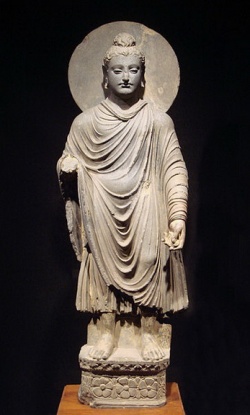The country
The valley of the Cophen is on three sides (North, West, South) surrounded by mountains, but there are accessible passes. As a consequence, Gandara could become an important link between India and Mesopotamia. The oldest indications for cultural contact between the ancient Near East and the Far East are about six thousand years old.
Coming upstream from India along the Cophen, the traveler's road forked some fifty kilometers east of modern Kabul.
He could go to the southwest along the river Lowgar, where he could cross the Altimur pass, reach the region along the Tarnak river and arrive in Arachosia.
He could go to the northwest along the river Ghorband. If he wanted to go to the west, he had to cross the Hajigak pass and reach the upper valley of the Etymandrus river, the modern Helmand Rûd. Following its course, he would eventually arrive in Drangiana.
North of the Ghorband, there were several passes across the Hindu Kush. On the other side were rivers flowing to the great Oxus, the modern Amudar'ya. This country was called Bactria.
A ruler who controlled Gandara, controlled the road from the Indus valley to eastern Iran and the plains of the Amudar'ya. Its strategic importance has been the cause of several important wars in this region. Among the invaders were the Indo-Iranians in the first half of the second millennium BCE, the Persians in the third quarter of the sixth century BCE, the Macedonians under Alexander the Great (329; below), the Graeco-Bactrians (184; below), the Sacae (c.110 BCE) and the Kushans.
